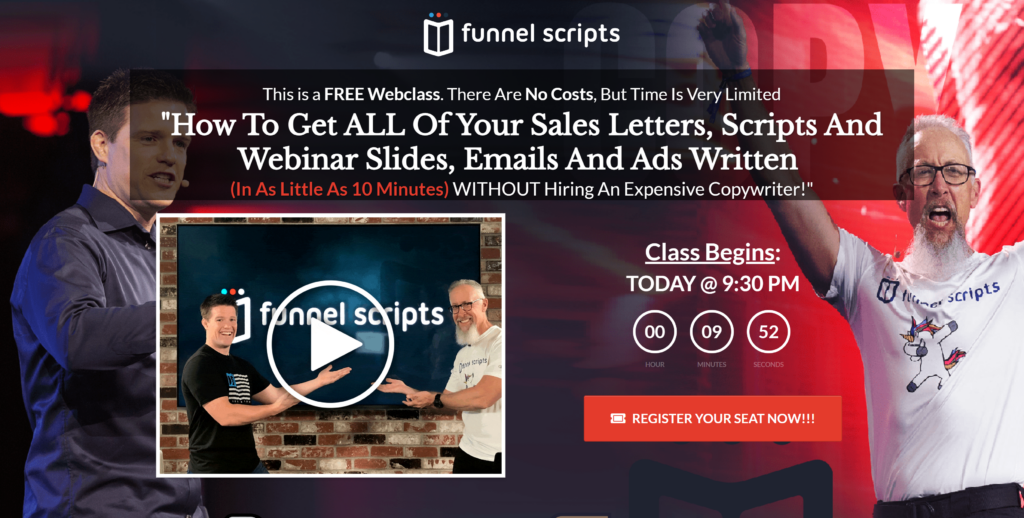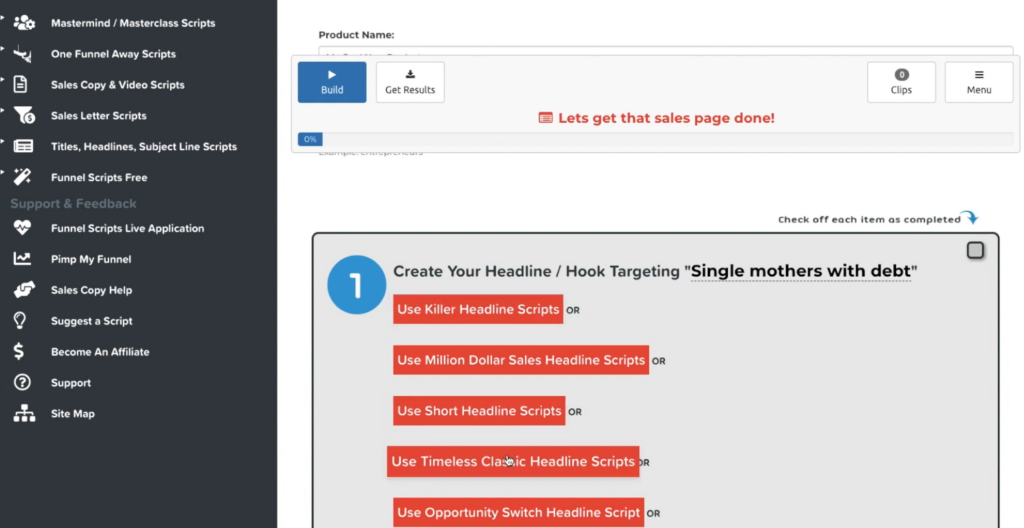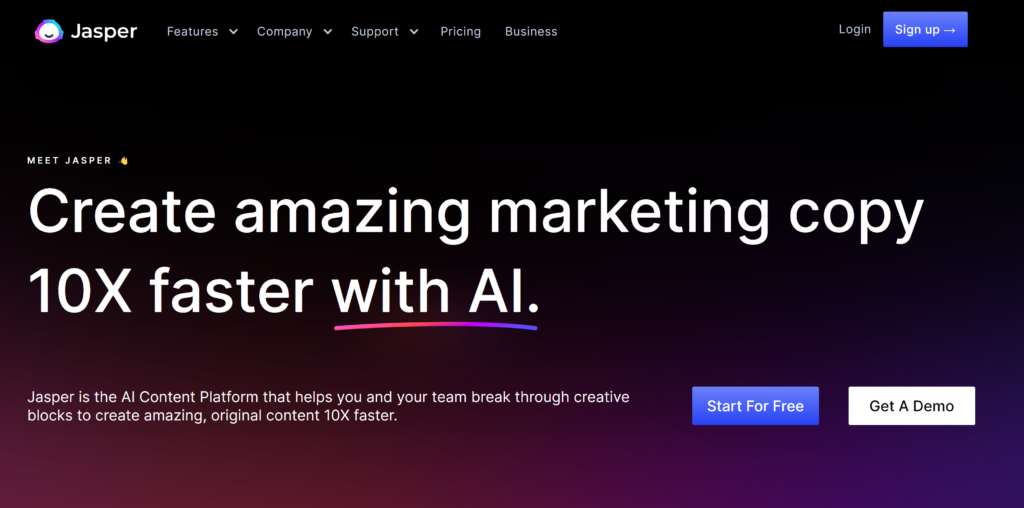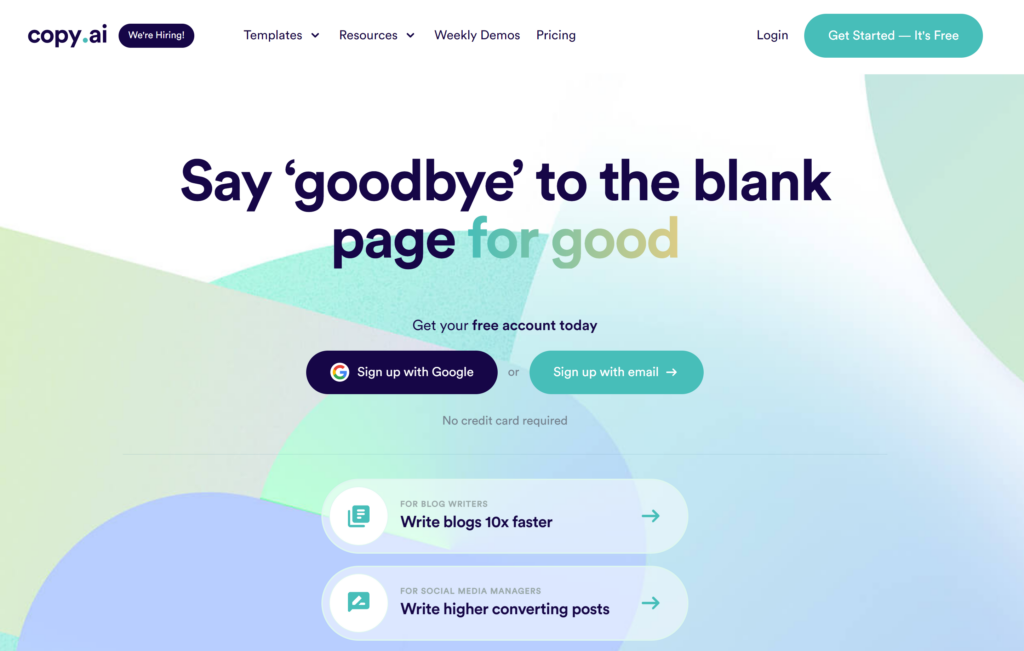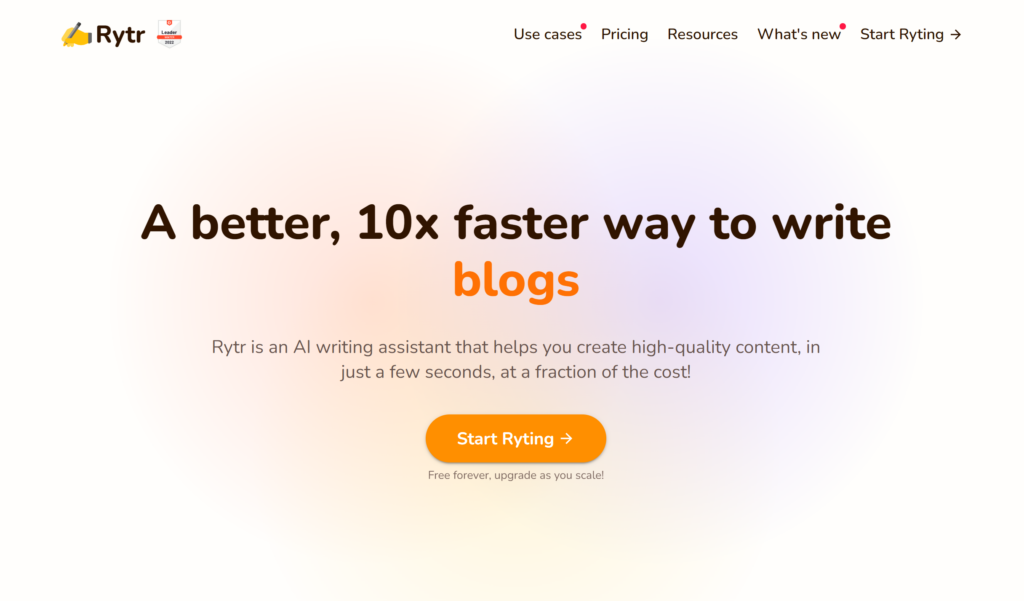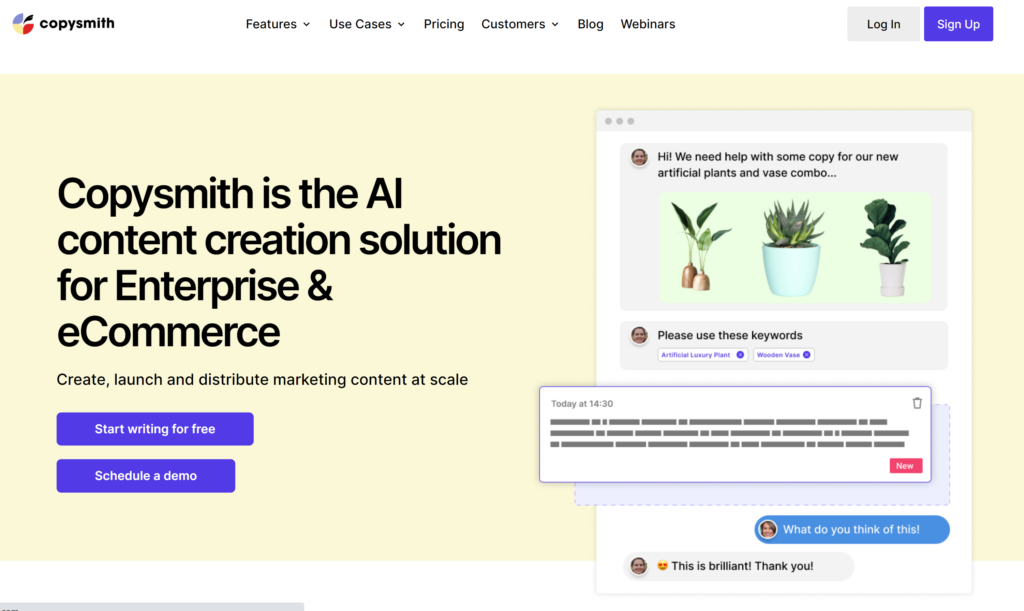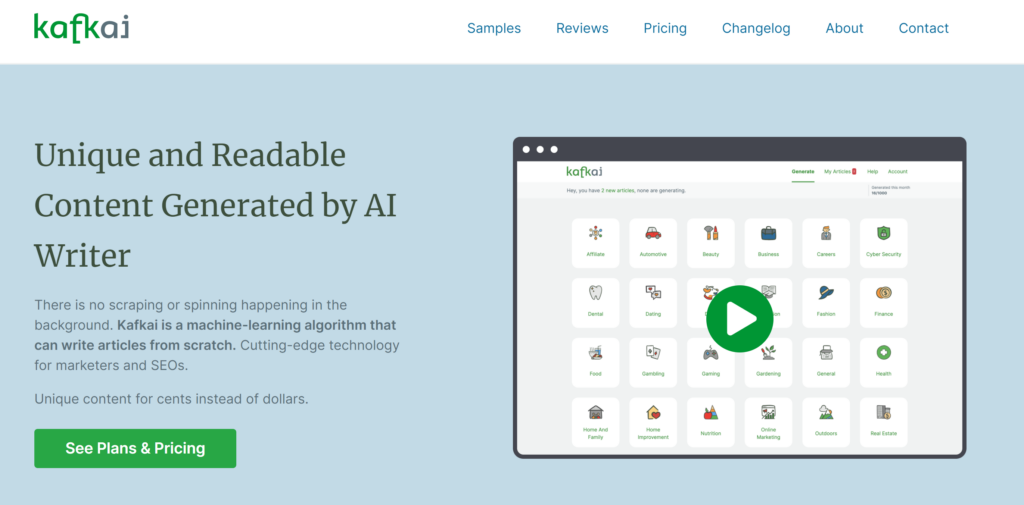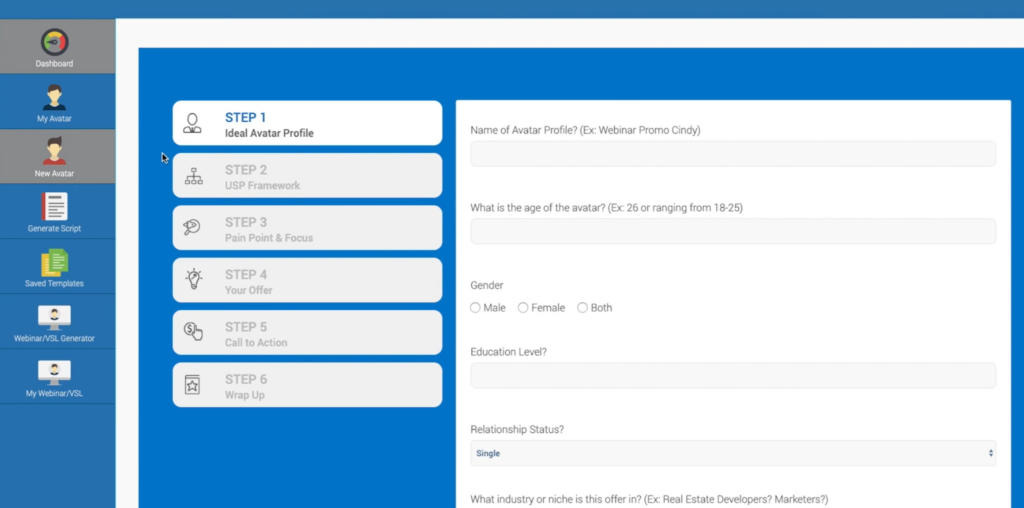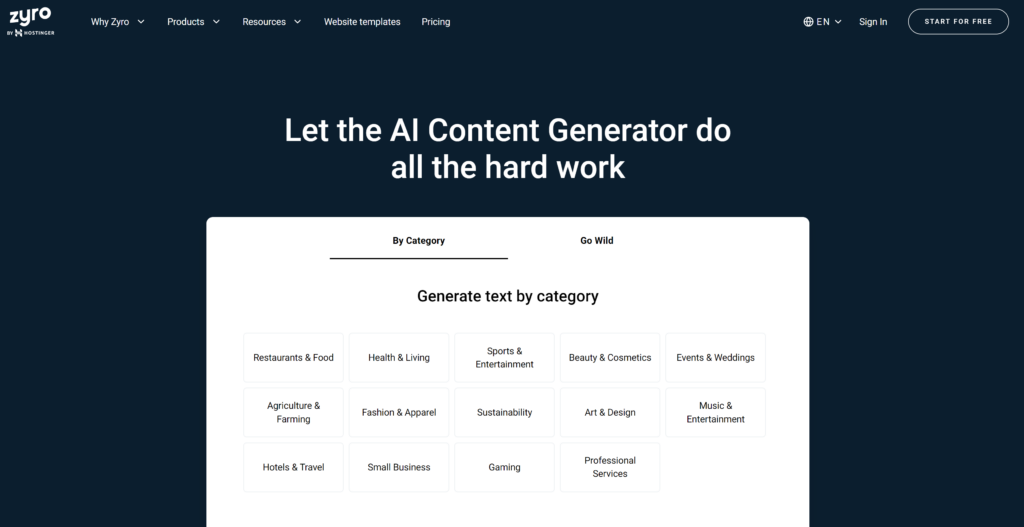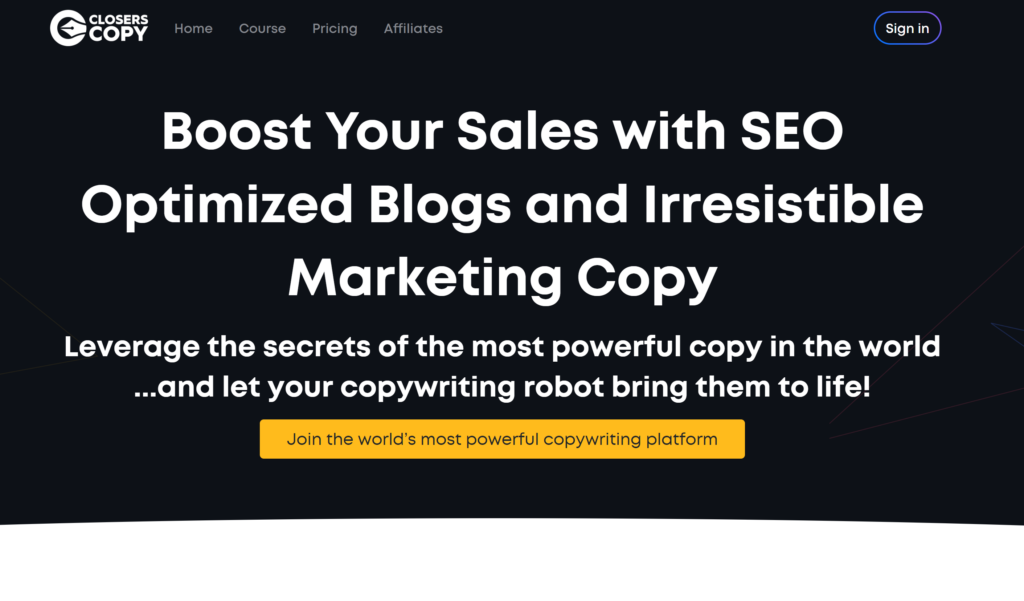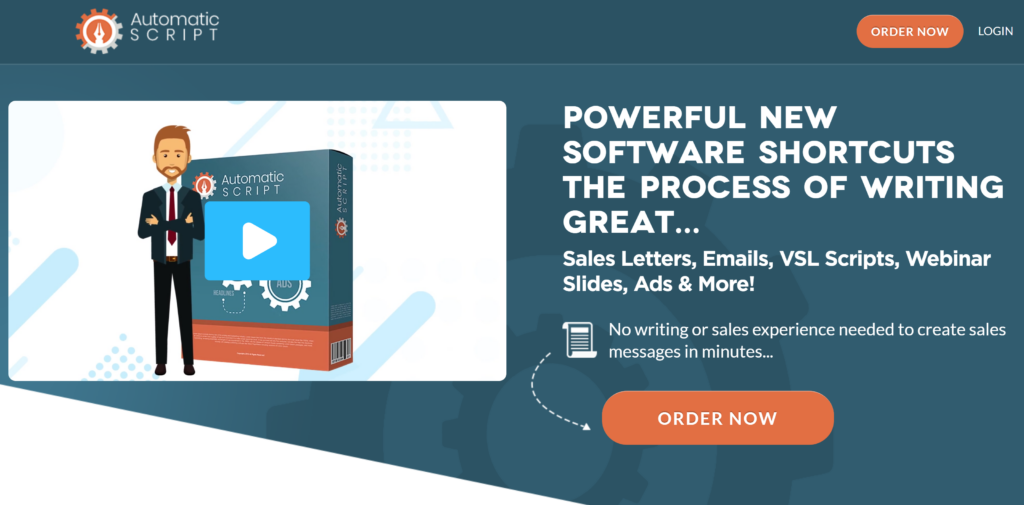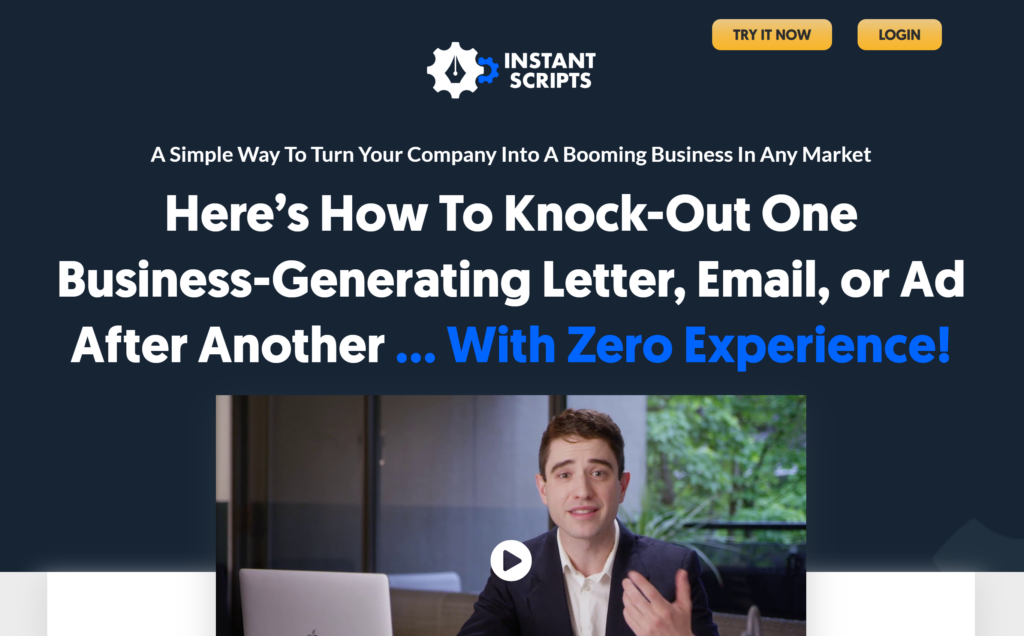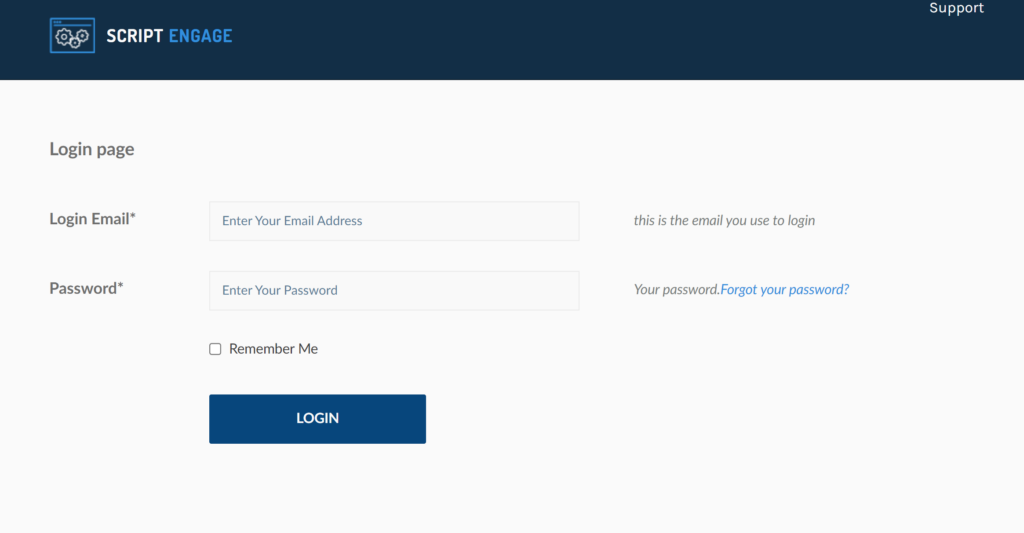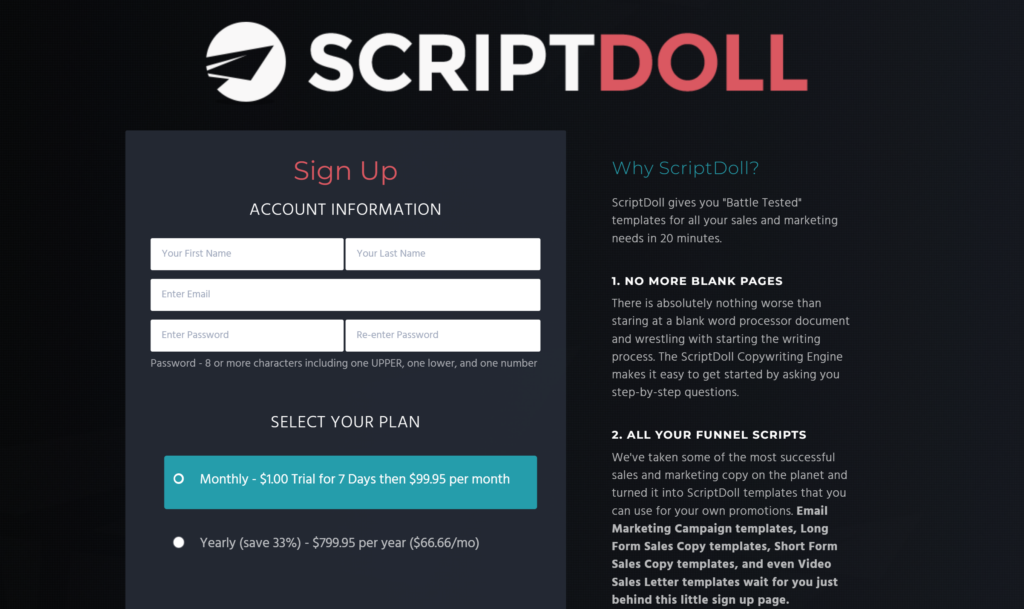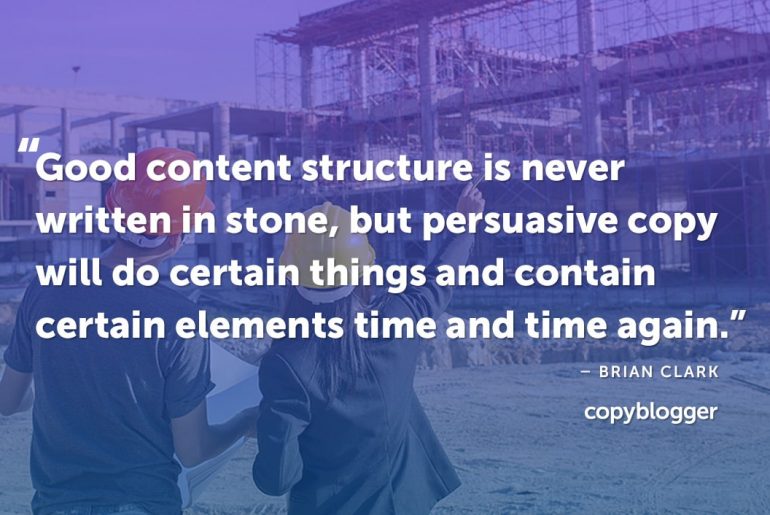Storyselling helps you strategically deliver stories that get people to take action. It supercharges your content marketing and copywriting to increase sales.
If you’re wondering how to make a living online as a writer who works in marketing, advertising, or another creative field, then you’re going to be thrilled to learn all about storyselling.
Writers who provide services to businesses benefit from storyselling because your ability to craft stories that drive action make you a writer businesses would love to hire.
And if you sell products, your ability to craft words in your business blogging that drive action help prospects make the choice to buy the products you offer.
What is storyselling?
Starting a blog to promote the products or services you sell online is a great first step, but you can’t just write articles about anything that comes to mind (or play just what you feel, for that matter).
Your blog post ideas have to tell compelling marketing stories that help you stand out from your competition.
That’s where storyselling comes in. It ensures that all of the time and energy you put into writing great content doesn’t go to waste, so you actually reach your goals. Blogging can be a hobby, but storyselling turns your blog into a business.
7 steps to killer storyselling
The step-by-step guide below will get you up and running with the basics of great storyselling to help your online business ideas come to life.
You’ll be well-positioned to build a blog that builds your business.
Of course, we’ll start with copywriting.
Step #1: Copywriting fundamentals
Unfortunately, nothing sells itself.
Smart content entrepreneurs know that people find great businesses through marketing and advertising.
So, the first step to storyselling is identifying the ideal person who is the perfect fit for what you sell. With copywriting, you speak directly to one person.
In order to do that, you need to intimately get to know that prospect.
- What problems do they need solved?
- What desires do they need fulfilled?
- How can you make their lives easier?
- What type of language do they use?
- What makes them laugh?
- What makes them feel inspired?
- Who do they turn to when they need to talk with someone?
- When are they ready to make a purchase?
- Why haven’t other solutions worked?
- How can you help them in ways other businesses don’t?
If you have an outstanding, ethical product or service, your target audience should be thrilled to hear about it.
Don’t be shy about using proven techniques — such as copywriting — to make sure the right people hear about how you can help them.
Word choice is critical here, as you empathize and build a bond with your prospect.
In order to guide him to the products or services that are right for his needs or desires, you have to use the right words.
“If you’re trying to persuade people to do something, or buy something, it seems to me you should use their language, the language they use every day, the language in which they think.” – David Ogilvy
Whether you’re selling a product, a service, a message, or an idea, your copywriting has a goal.
Every word, every sentence, every paragraph is intentional — it’s not about fulfilling a certain word count or writing a certain number of pages.
However, as a rule of thumb, long copy typically works better than short copy.
It’s simply because the more opportunities you have in your storyselling to make compelling arguments in favor of your offer, the more opportunities you have to persuade someone to take you up on it.
You have to understand why someone might be hesitant to buy and overcome those fears as you guide them to make a decision (more on that in Storyselling Step #6 below.)
Step #2: Storyselling combines content marketing and copywriting
If you have a great offer, weak marketing actually does everyone a disservice.
But what exactly is copy? And how does it fit in with content marketing?
In short, copy is creative text that intentionally guides someone to do business with you.
Picture Don Draper from Mad Men staring out a window, Canadian Club whisky in hand, quietly contemplating the perfect way to position a product to make his client (and himself) a lot of money.
It’s not quite that glamorous in practice, but it does require a large dose of creativity and discipline.
You create content to attract and engage an audience. Then, your copywriting skills help close the deal so that those people become customers.
Content marketing is marketing that is too valuable to throw away. Blogs, podcasts, and videos are common platforms used for storyselling.
Copywriting is the art and science of persuasive writing. It’s the words that guide someone to take the action you want them to take (i.e., Subscribe, Join, Buy) after you’ve hooked them with your remarkable storyselling in your content.
The two practices use empathy to build an audience and convert prospects into buyers.
Picture this:
Content marketing is a vase.
Copywriting is a flower.
The vase is the valuable container that holds a persuasive flower (your offer).
Content marketing and copywriting work together for your business.
Ask yourself:
“What does someone need to know to do business with you?”
You’re always thinking of what the prospect is going through — and how you can meet them where they are to guide them on their journey.
Empathize with your prospect on their journey from where they are to where they want to be.
- What does that person think?
- What does that person feel?
- What does that person see?
- What does that person do?
Researching those factors gives you a pool of information to pull from that helps you choose the right words for your final copy.
Once you’ve learned about your prospect, you take your reader on a storyselling journey that persuades.
Step #3: The art of persuasion
Now that we’re clear on how content marketing and copywriting work together, we can drill down into your main job as a copywriter who uses storyselling: persuasion.
In order to persuade, you have to intimately know who you’re talking to and avoid vague language, so make sure you’ve reviewed Storyselling Steps #1 and #2 above.
Have a clear, specific picture of your ideal customer?
Good.
Here’s a 5-part template to help persuade them to do business with you:
- Where your prospect is on their buying journey
- What you’ve got for them
- What it’s going to do for them
- Who you are
- What the prospect needs to do next
Whether you want to get an opt-in for your email list, gain a new blog subscriber, make a sale, or just inspire readers to support your favorite cause, start with this storyselling method.
You can add other copywriting techniques to make it work even better, but with the following elements in place, you’ll have the most important bases covered.
Let’s look at each of the five elements.
1. Where the prospect is on their buying journey
You’ll start by telling a story that the prospect can see themselves in. They’re the hero in this story and you’re going to be their guide.
Your goal is to show them that you understand:
- Where they’re at
- What they’re going through
- Their struggles
- Their frustrations
- What brings them joy
- Where they’d like to be in the next few weeks … the next few months … the next few years
- Etc.
This is your biggest opportunity to be creative and form a bond with your readers.
What do your competitors miss or get wrong? Take advantage of storyselling to fill in those gaps.
2. What you’ve got for them
After you’ve demonstrated that you understand where the prospect is on their buying journey, you next have to describe what you have for them.
What’s your product? What does it do? Who’s it for?
Start with a simple overview of what you’ve got to offer, and before you elaborate on that too much, fulfil the next requirement …
3. What it’s going to do for them
Here’s where we talk about the great benefits of taking the action you want your reader to take.
What’s better about life with your product or service?
Describe the end result, the “after” picture once your customer has bought your product and used it as you recommend.
Let the reader know how your product helps her reach the goals that matter most to her.
Now it’s time to unpack the rest of what the product or service is all about.
These are “features.” They’re important, although they’re not as important as “benefits.”
But if you gloss over the details of what your product or service actually contains, people will be hesitant about putting their money down. And as we all know, hesitant people don’t buy.
Typically, the best way to list features is with a series of fascinating bullet points. Include enough specifics to make the product feel valuable.
Bullet points are a “secret weapon” for copywriters because they pull the eye in and let you make your point in a powerful, skimmable way.
4. Who you are
Most of the time, you need to establish that you’re a trustworthy person and that you know what you’re talking about.
That’s why good sales letters often include a photo near the top of the page.
The photo can include some element personalized to your business that helps the reader like and trust you.
Remember that this is not just who you are, but how you’re like your customer, and what you offer that will benefit her.
So, it’s not actually about you after all — it’s about how you help her.
5. What the prospect needs to do next
This is your call to action (more on this below in Storyselling Step #7).
The reader needs to know specifically what to do next.
To move forward with the sale, tell the reader what to do right this minute. Be specific and painstakingly clear.
Storyselling isn’t just about exchanging dollars. It’s about motivating a specific, well-defined behaviour.
The next time you see a really masterful sales pitch, try to identify these five elements. Look for it in infomercials, catalogue copy, sales letters, and good product reviews.
When you start spotting these persuasion elements “in the wild,” you’ll be on your way to becoming a more effective copywriter — a copywriter who sells.
Step #4: Magnetic headlines
When you start studying ads you encounter every day, you’ll notice that they don’t get read if one critical element isn’t in place: the headline.
Headlines grab attention so that the rest of your writing gets read. They’re the most important part of your storyselling.
Why?
Because without a magnetic headline, it doesn’t matter how many brilliant details you go on to tell your reader about.
They’ll leave your page (web or otherwise) if your headline doesn’t give them a reason to stick around.
So, your headline either:
- Convinces a prospect to read the rest of your copy (potential sale)
- Doesn’t hook a prospect — and they don’t read the rest of your copy (no potential sale)
First impressions matter, and when it comes to attracting attention from interested prospects, you (once again) must know your customer.
When you empathize with your ideal prospect, you’ll know how to use the right language to keep them reading your copy because you’ll know how to express information that is relevant to their needs and wants.
Your headline needs to communicate:
- Who should care about your story
- How you’re going to help them, in ways competitors don’t
- Why they should care right now
You want to get someone to read your story immediately, because content or copy “saved for later” is content and copy that’s forgotten.
How do you do that?
- Write your headline drafts first.
- Draft a ton of options, including slight variations.
The main thing to keep in mind is that a headline is a promise.
It promises some kind of benefit or reward in exchange for attention.
That reward could range from entertainment to a fulfilled dream to the solution to a pressing problem.
A good way to make sure your headlines always offer a compelling reward is to refer back to the 4-U approach taught by our friends at AWAI (American Writers & Artists Institute).
Your headlines must:
- Be USEFUL to the reader
- Provide her with a sense of URGENCY
- Convey the idea that the main benefit is somehow UNIQUE
- Do all of the above in an ULTRA-SPECIFIC way.
Ultimately, a benefit-driven headline effortlessly leads a reader into your copy.
Many new copywriters struggle with headlines that are UNIQUE and ULTRA-SPECIFIC because it’s often challenging to keep your message clear while satisfying those two requirements.
When you study the headlines that pique your interest, identify the parts that make them UNIQUE and ULTRA-SPECIFIC — the exact reasons why they got your attention and persuaded you to take a closer look at the body copy.
Learning how to write great headlines is an absolutely vital part of your success with storyselling.
When you start your next writing assignment — whether it’s a blog post, ebook, video script, or sales page — make sure you leave plenty of time for drafting and experimenting with headlines.
Step #5: Benefits and features of a product or service
Once you convince a prospect to read your copy, they have to know what’s in it for them if they take you up on your offer.
Benefits and features are the core of copywriting.
The specific skill of being able to clearly describe benefits and features in a persuasive way is what differentiates copywriters from other types of writers.
What are features? What are benefits?
And how do they support each other to make a sale?
- Features explain your offer.
- Benefits persuade someone to care about the offer.
You guide a prospect to discover:
- What they’re going to get
- How it’s going to help them get the results they want
These details emerge from your storyselling research about your target audience, in addition to basic facts about your product or service.
As an exercise, dissect the different sections of your copy and label them as benefits or features.
Is it balanced?
If your copy doesn’t have enough benefits, you’ve likely not dug deep enough into the frustrations and obstacles that your ideal customer or client faces.
Uncover those struggles, so that you can perfectly position your product or service as a way for them to conquer the issue at hand.
Keep reading to find out the best ways to convince those prospects who are still on the fence about your offer.
Step #6: Overcome objections
A business needs to be aware of possible reasons why someone may not choose their product — and then address those concerns head-on.
Effective copy addresses the conversation already going on in a prospect’s mind, and the better your storyselling can soothe any doubts a person may have about purchasing your product or service, the better your chances of gaining a customer or client.
The next time you’re listening to your favorite podcast or watching your favorite YouTube channel, you might want to think twice before you skip over any ads or promotional content.
Listening to or watching ads is a great way to spot all of the ways you can overcome objections with your copy.
Skilled copywriters carefully select each word they choose to:
- Differentiate further. What does your prospect struggle with the most? How do you help them with this in ways competitors don’t?
- Overcome objections that the prospect may have to both your benefits and features.
That combination forms a deeper bond with the prospect and supports their purchase decision.
Through this process, you have the opportunity to highlight the true benefits you provide that make you stand out as the best choice for their wants or needs.
True benefits in your copy don’t address what you think they need. True benefits in your copy address what the prospect actually wants or needs.
With great storyselling, it’s not the problem you think they have. It’s the problem they actually have.
When you overcome objections, you speak to true benefits in order to persuade.
If someone isn’t convinced by your offer so far, what do you need to tell them to close the deal?
Think about showing versus telling here, with winning details within:
- Case studies
- Testimonials
- Exercises/worksheets
- Demonstrations
- Tutorials
Your customer or client wants to see how someone just like them has truly benefited from your product or service.
Step #7: Calls to action (CTAs)
Once you’ve built a desire for a product or service, it’s time to bring all of your storyselling work together.
Every persuasion sequence — whether it’s an email opt-in page for a freebie or a sales letter for a product or service — needs a clear and specific call to action.
If your copy guides someone to an action that doesn’t cost anything (i.e., subscribe to your blog), you still need to sell it.
You’re competing for attention and time rather than money — and those are in very short supply.
Select only one goal per piece of copy.
At the end of your text, you’ll explicitly state the action you’d like your reader, listener, or viewer to take (based on the goal of the copy).
Some actions you might want someone to take include:
- Sign up for your free email course
- Comment on your blog post
- Share your in-depth guide on social media
- Like and Subscribe to your YouTube channel
- Join your paid membership community
This is strategic. When you have one of these action-goals in mind before you write, your copy will support your goal.
It should feel natural at this point, after everything you’ve already shared, to ask the prospect to take your desired action.
The work you’ve done to create persuasive copy naturally leads to asking your prospect to take the action you want them to take.
If you’ve followed the Storyselling Steps above, your prospect should be happy to take you up on your offer.
Copywriting in your content marketing helps you build and maintain relationships on the prospect’s journey to becoming a customer or client.
Are you new to storyselling? What to do next
The written word drives the web. It always has, and it always will.
Even if you’re working with audio or video, the right words are still what make the difference.
- Words drive engagement.
- Words drive customer experience.
- Words drive sales, growth, and profit.
And if you want to master the art of using words to drive business results, you’ve come to the perfect place — Copyblogger has been helping accelerate the careers of writers just like you since 2006.
“If you are both killer and poet, you get rich.”
In the classic book Ogilvy on Advertising, legendary copywriter David Ogilvy recounts a conversation with his colleague William Maynard, creative director at Ted Bates & Company.
Maynard shared this observation about the writers he had worked with during his career:
“Most good copywriters fall into two categories. Poets. And killers. Poets see an ad as an end. Killers as a means to an end.”
And then Ogilvy famously added:
“If you are both killer and poet, you get rich.”
He would know. Ogilvy was responsible for some of the most creative and innovative advertisements of the “golden age” of advertising.
So when we talk about being a poet and a killer inside Copyblogger Academy, what does that mean?
It’s simple. We’re talking about a person who is both creative and strategic.
Too much content produced in the name of digital marketing is viewed as simply a means to an end, and that’s why it fails.
And yet, no one is interested in paying you to express yourself unless it also meets business objectives.
The best copywriters and content marketing professionals understand how to combine poetry with purpose — and that’s a large part of our ongoing training with Copyblogger Academy members.
When creative writing is employed strategically, with the aid of illuminating data and powerful technology, your capacity for meaningful impact and personal success skyrocket.





